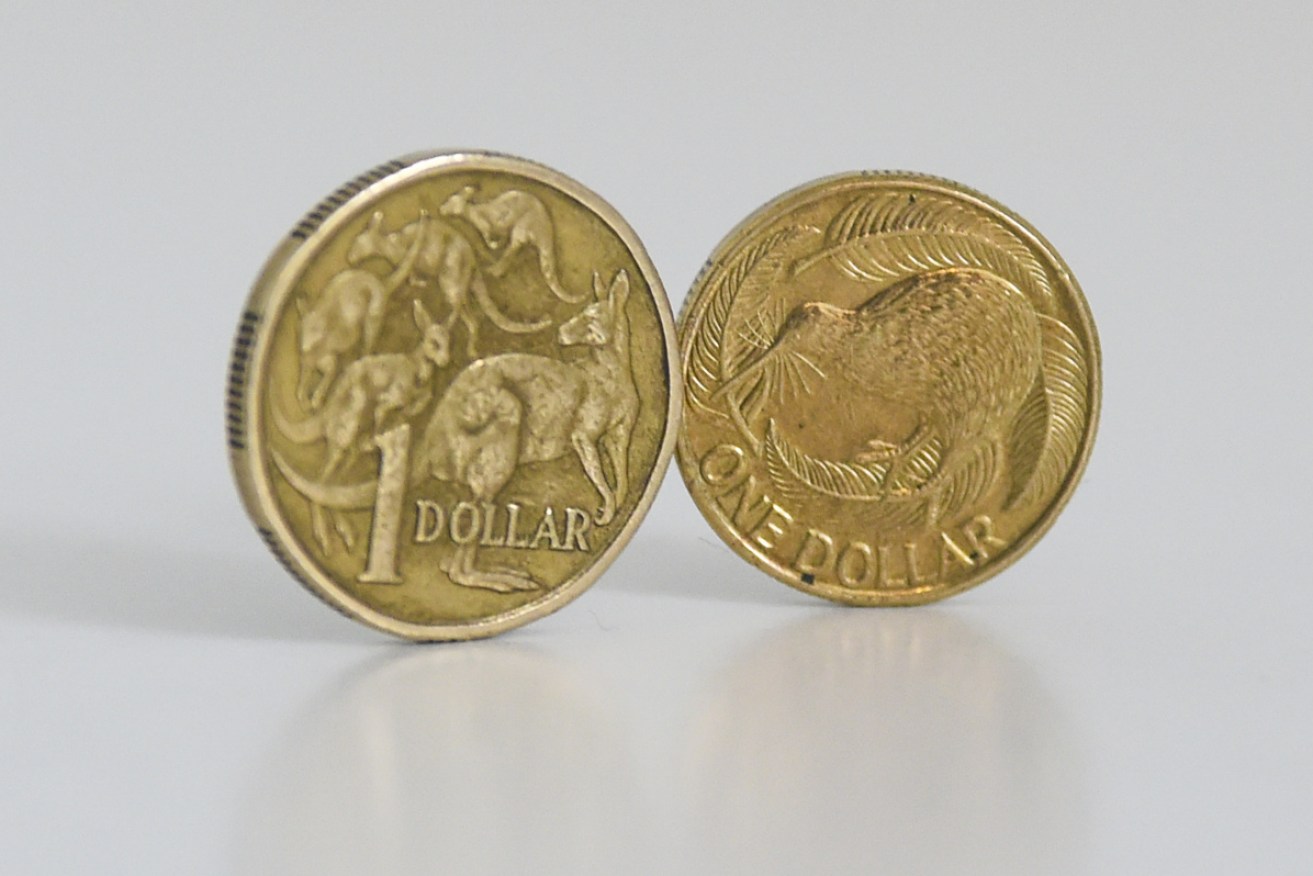Weak jobs numbers push Aussie dollar to 11-year low

The Australian dollar hit a low point of 65.93 US cents – its weakest level since March 2009. Photo: AAP
The Australian dollar has plunged to an 11-year low – its worst level since the global financial crisis – following an unexpected jump in unemployment.
Data released by the Australian Bureau of Statistics on Thursday revealed that the jobless rate jumped from 5.1 per cent to 5.3 per cent, despite better than expected job creation.
The Reserve Bank has recently named a consistent increase in the unemployment rate as the most likely trigger for another interest rate cut, after the RBA slashed rates three times last year to a record low of 0.75 per cent.
TD Securities analyst Prashant Newnaha said the January jobs data on their own are not enough to force the Reserve Bank to cut rates again, but that another move down may not be far away.
“The RBA did indicate the unemployment rate would need to deteriorate ‘materially’ for it to cut. The next employment report is on March 19 and an unemployment number closer to 5.5 per cent would fit the bill for the RBA to possibly cut in April,” he said.
“A 5.5 per cent unemployment rate for the next employment report cannot be ruled out.
“If the coronavirus leads to job shedding and the participation rate remains unchanged at 66.1 per cent or increases, then the unemployment rate could head above 5.5 per cent.”
The increasing likelihood of at least one more rate cut saw the Australian dollar fall in the immediate aftermath of the ABS release, before tumbling again overnight and falling even further in today’s Asian session.
The Aussie dollar crashed below 66 cents for the first time since the financial crisis early this afternoon, trading at 65.94 US cents around 1.30pm (AEDT) on Friday.
NAB senior currency strategist Rodrigo Catril said there are strong indications the Australian dollar could break even lower, as fears about coronavirus and the domestic economy increase.
“Technically now the AUD looks very vulnerable and with the USD having momentum on its side, many will be looking at GFC levels as a guide for AUD support.”

The Australian dollar is now around 10 cents below its average level since it started trading freely on global markets. Supplied: NAB
ANZ currency strategists agree that the outlook for the Australian dollar is weak in the short term, even though they see fair value as being higher at 70 US cents.
“While easing geopolitical risks and accommodative global policy have been supportive, only a globally synchronous rise in growth would lift the AUD much above current levels,” they argued.
The Australian share market is fairing little better than the currency, with the ASX 200 down 0.2 per cent to 7150 by 11.15am (AEDT).
The major miners were a drag, as were some other companies that might suffer if the coronavirus outbreak worsens, such as Qantas, which was down 2 per cent after a strong rise yesterday on its latest profit results.
Wall St falls on coronavirus spread
Neither the Australian dollar nor the ASX were helped by weak sentiment on global markets overnight Thursday to Friday.
Stocks fell on Wall Street because of the rising number of coronavirus cases and the growing economic impact of the disease.
Technology stocks led the falls.
Microsoft, Apple and Amazon fell between 0.8 and 1.5 per cent.
ViacomCBS fell 17.9 per cent as its quarterly earnings fell short of forecasts in the first quarterly results since the two companies merged.
The negative mood on markets was triggered by a Chinese state media report that said a hospital in the Chinese capital Beijing had reported 36 new cases of the COVID-19 virus, leading to fears it is spreading among healthcare workers.
Confidence was already weak after two deaths in Japan and a rise in infections in South Korea.
Minutes from the Federal Reserve’s last meeting also showed the central bank expressed concern about possible economic risks from the coronavirus, while the number of Americans filing for unemployment benefits rose modestly last week.
The Dow Jones index closed down 0.4 per cent at 29,220, the S&P 500 also ended 0.4 per cent lower at 3,373 and the Nasdaq was down 0.7 per cent.
European stocks fell too, with London’s FTSE 100 down 0.3 per cent and the Euro Stoxx index down 1.1 per cent.








